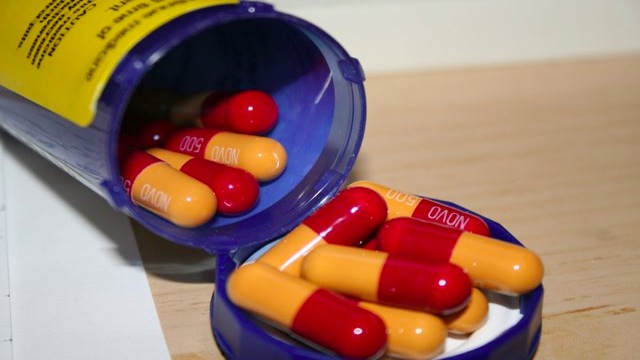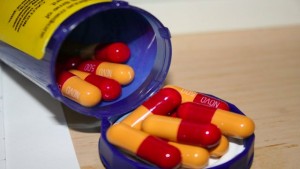But it’s harder to find drop-off locations in other parts of the country, especially those that accept controlled substances like narcotic painkillers. Cash-strapped city and county governments struggle to fund these programs within complicated federal, state and local regulations for medicine collection and disposal -- let alone pay staff members to administer the programs.
A federal law designed to carefully track potentially abused medicines, with the goal of reducing the possibility that they end up in the wrong hands, inadvertently limits collection locations. The U.S. Controlled Substances Act strictly limits who can accept unused narcotics. Only law enforcement officers can collect medicines recognized by this act, including steroids, sleeping pills and antidepressants. It’s turned into a big headache for pharmaceutical take-back program organizers.
Convenience matters when choosing locations for pharmaceutical disposal sites, and a police station may not be the best choice. People tend to return medicine to a pharmacy where they first picked it up, but the current law prevents pharmacists from accepting controlled substances unless a police officer is present.
The Secure and Responsible Drug Disposal Act, signed by President Barak Obama in October 2010, addresses this legal restriction. This new law gives the U.S. Attorney General power to modify the Controlled Substances Act and extend collection privileges to people other than law enforcement officers. However, the DEA hasn’t released the new regulations yet, and disposal program organizers hope the new rules will appear soon.
But even once the federal regulations are changed, there are state and local waste regulations to consider. In California, for example, medicines in a home are considered residential waste and exempt from any state disposal laws. But once drugs are combined in the same bin at a business or collection site, voluntary state guidelines effective until January 2013 recommend treating it as medical waste. The new Alameda County ordinance requires it to be incinerated, and there are no medical or hazardous waste incinerators in the state. That means pharmaceutical waste must be shipped across state lines.
There’s an added wrinkle for controlled substances. If the collection bin contains any of these drugs, federal law requires it to remain the property of law enforcement or specially registered waste haulers until it is destroyed. In California, police officers accompany these collection bins to waste-to-energy incinerators in Los Angeles and Stanislaus County, says Bill Pollock, program manager of the Alameda County Household Hazardous Waste Program.
Pharmaceutical disposal programs know how to work within these regulations, says Stevan Gressitt, one of the founders of the Institute for Pharmaceutical Safety, a collaboration of clinicians from several Maine universities. But running such a program requires consistant funding to cover medicine collection, disposal and staff training and time.
As the public asks for medicine take-back programs, local governments struggle to fund them, says Heidi Sandborn, executive director of the California Product Stewardship Council. That spurs legislation like the new Alameda County ordinance requiring the pharmaceutical industry share the responsibility for disposing of waste medicine. A stable source of funding means that collection sites can expand to convenient locations for more Alameda County residents, like pharmacies and hazardous waste drop off sites, Pollock says.
This regulation is in the same spirit as one signed by the governor in 2010 requiring paint companies to pay for disposal of leftover paint. Paint sold in California will soon have a surcharge to cover its disposal, Pollock says.
Unlike paint, the challenges of funding a medicine disposal program may not be over yet. A representative for PhRMA, the pharmaceutical industry group, told the Associated Press that she questioned the county’s ability to require the industry to pay for such programs, although no legal challenge has been considered.
If you're looking to get rid of unused medicine and there are no take-back programs near you, the U.S. Food and Drug Administration has guidelines for its disposal. When directed by the manufacturer, flush some medicine down the toilet. Otherwise, mix the drugs with coffee grounds or other unpalatable things and throw it away.
UPDATE 8/1/12: The article was corrected to reflect the fact that household medicines combined in a bin at a collection site are not classified as medical waste, as was originally stated, but voluntarily handled as such.

